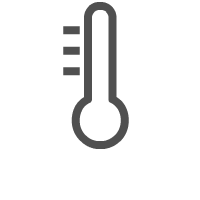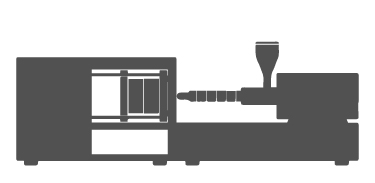Home / Knowledge
Knowledge
Knowledge base of plastic injection molding
3 major keys to grasp in plastic injection molding
Dryness of plastic raw material
Plastic raw materials, which are usually in a solid or elastomeric state at normal room temperature, are heated during the plastic injection molding process so that they will change from solid plastic into a molten liquid with mobility in order to facilitate shaping in the subsequent injection molding into finished product. What requires special attention during the process of injection molding of plastics is how dry the plastic raw materials are. if a raw material with moisture is driven into the high temperature barrel, it is very likely to jeopardize the stability of the process of injection molding, and may even affect the appearance and property of the molded product.

Raw materials with moisture


When in the high-temperature barrel, these cause the injection process unstable,


affecting the appearance and properties of the product.
Of the many common raw materials in this industry like PP, PA, PE, PC and ABS, some actually contain a small amount of moisture on their surface and require drying separately, for example, PA and PC. Thus, it is necessary to verify what plastic materials being used before production and ensure the dryness of the materials before proceeding with the injection process.
Choice of Injection Molding Machine
There is a variety of plastic injection molding machines available, and the selection of model is a key to plastic injection molding, because the product to be molded varies in size, weight, and material, and thus the suitable injection molding machines differ. Besides considering the property of the molded product, we recommend that you take the mold opening stroke, clamping force, injection volume, screw compression ratio and injection speed into account as well, to select the most suitable injection molding machine for your product.

Size

Weight

Raw plastic material
Adjustment of Parameters for Plastic Injection Molding
Operator’s skills are crucial to the process of plastic injection molding. The so-called operational skills are actually the setup of controlling injection parameters and the adjustments made at any time. We divide the range of plastic injection parameters to be adjusted into the following five categories: "Temperature", "Pressure", "Speed", "Position", and "Time". Of these, temperature is more particular than the others; it covers the drying temperature, injection barrel heating temperature, mold cooling temperature, etc. to be adjusted, while the other parameters are set and fine-tuned, when appropriate, according to the steps of plastic injection and the injection condition of each product. In the past, skilled operators tended to rely on their feelings or experience in adjusting the machine; however, as technology advances, on today’s injection molding machines, adjustments of parameters can be made based on the data that are transmitted in real time.

Temperature

Pressure

Speed

Position

Time
Process of Plastic Injection Molding
We simplify the plastic injection molding process into 5 steps, namely, Plasticizing > Injection > Pressure Holding > Cooling > Demolding. These stages are in continuous cycle throughout the manufacturing process, and with the trend of automated production, they can produce large quantities of plastic products as needed in an efficient manner.
1.Plasticizing
In melting the raw plastic material at a high temperature in the barrel, the processing temperature is set on the injection molding machine according to the characteristics of the selected plastic material, so that the plastic pellets become molten at the correct temperature.
2.Injection
Raw plastic material is injected into and filled the mold by means of a screw, where the mold was designed with a space used to shape the plastic. At this point of time, it is necessary to adjust the parameters of the injection molding machine according to the conditions of the plastic injection molding or the mold condition, so as to avoid problems such as size discrepancy and burrs that may follow.
3.Pressure Holding
With the plastic material is filled into the mold, pressurization on the mold cavities continues to ensure that the plastic material is filled compactly and to avoid its backflow.
4.Cooling
When the raw plastic material is injected into and filled the mold, it is shaped by the designed cavities in the mold. And now it is necessary to adjust the parameters of the injection molding machine according to the conditions of the plastic injection molding or the mold condition, so as to avoid any subsequent problems such as size discrepancy and burrs.
5.Demolding
Last, the plastic products are completed and separated from the mold.









